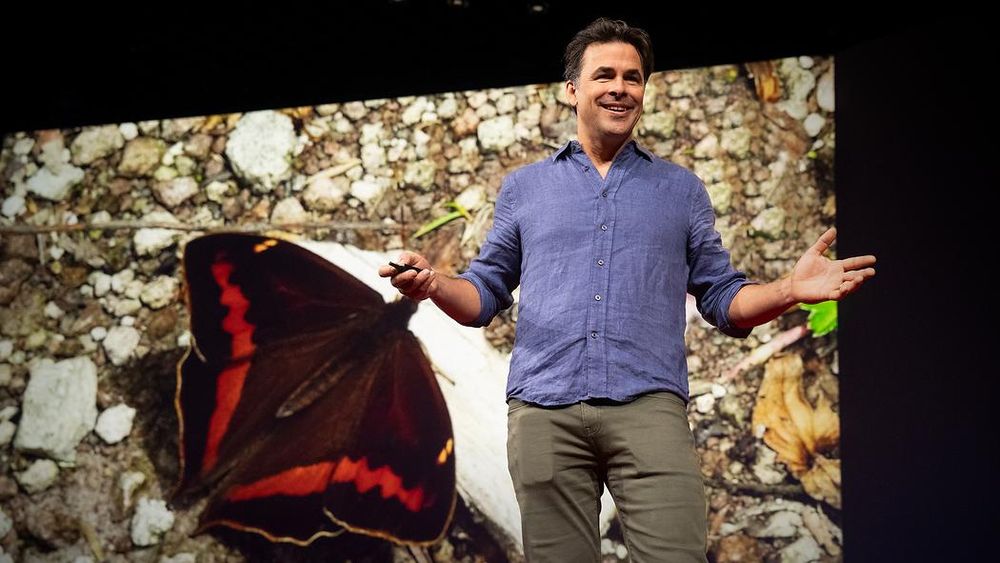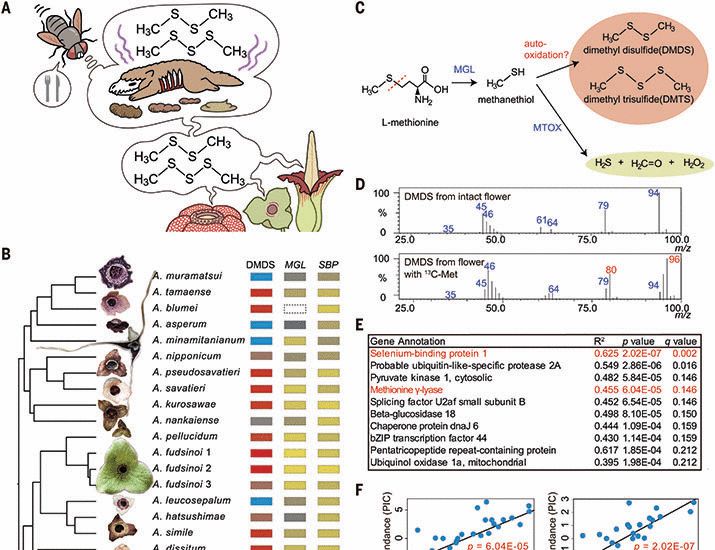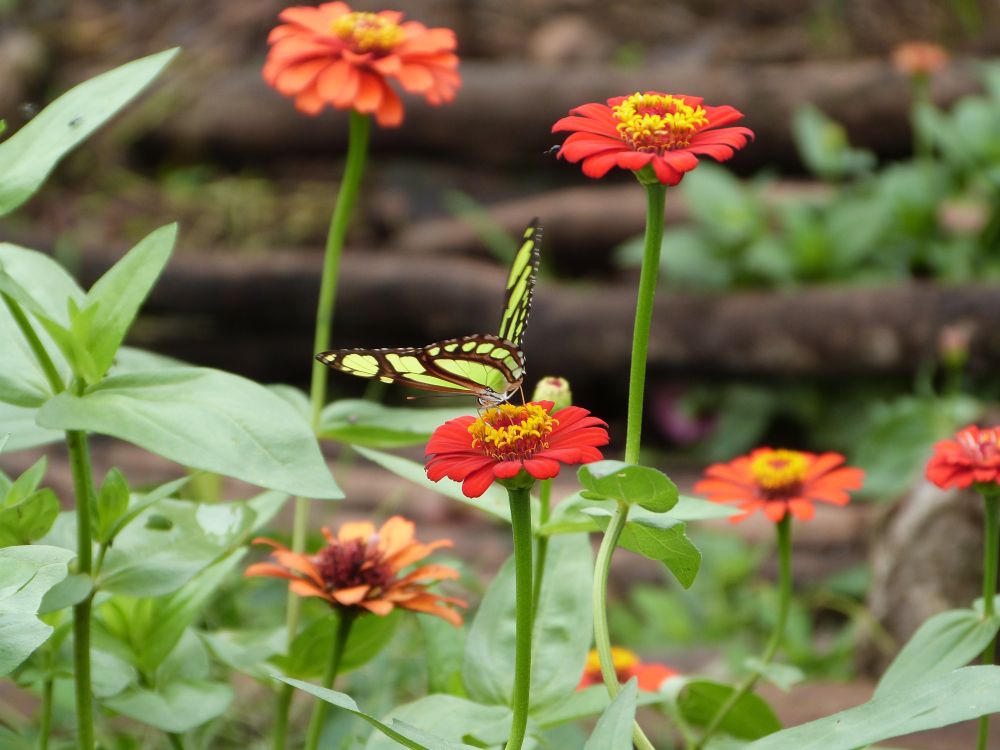
Green butterfly sat on a flower.
I'm looking for PhD students to join the lab starting August 2026. We study the evolution of insect chemical signals so if you're interested in evolutionary biology, chemical ecology, molecular biology, behavior, or genetics, this could be a good fit for you! More info here: tinyurl.com/mrxchwfm
11.09.2025 13:45 — 👍 45 🔁 53 💬 1 📌 2

Known and proposed ecological functions of aboveground aromatic emissions (i.e. constitutive volatile emissions from vegetative plant tissues) in mediating biotic interactions with arthropods, other plants, and microorganisms.
#Viewpoint: Exploring the importance of aromatic #plants' extrafloral volatiles for #pollinator attraction
Kantsa et al. 👇
📖 nph.onlinelibrary.wiley.com/doi/10.1111/...
#LatestIssue #PlantScience
22.09.2025 06:35 — 👍 14 🔁 10 💬 0 📌 0

"The fate of pollen in two morphologically contrasting buzz-pollinated Solanum flowers" by Vasquez-Castro et al. freshly published! doi.org/10.26786/192...
17.09.2025 07:58 — 👍 6 🔁 2 💬 0 📌 0

See last article on "The cognitive side of communication in social insects", just published in @TrendsCognSci . Free access under this link!
authors.elsevier.com/sd/article/S...
10.09.2025 07:16 — 👍 16 🔁 7 💬 0 📌 0
Spent hours being spellbound by Convolvulus Hawk Moths last night as they nectared on Nicotiana plants in my highland garden!. Up to 3 feeding at a time, their entire abdomens glowing red hot in the thermal from flight muscle use!! #teammoth @migrantmothuk.bsky.social @savebutterflies.bsky.social
08.09.2025 18:53 — 👍 283 🔁 63 💬 8 📌 5

Beyond the Grant–Stebbins model: floral adaptive landscapes and plant speciation
AbstractBackground. Floral diversity, a striking feature of angiosperm evolution, provides the impetus and rationale for linking pollinator-driven selectio
Is the Most Effective Pollinator Principle a zombie idea? How do plants adapted to one pollinator shift to another without traversing an adaptive valley? How should we measure fitness in pollinator selection studies? We explore these questions and more in a new review doi.org/10.1093/aob/...
08.08.2025 18:10 — 👍 22 🔁 12 💬 1 📌 0
Even more fascinating after reading ‘Birds and flowers’ book by @jeffollerton.bsky.social
#BirdPollination #Generalists #Ecology
08.08.2025 21:55 — 👍 7 🔁 4 💬 1 📌 0

Exclusion of bird pollinators impacts mating system and reduces offspring fitness in a pollination-generalist tree
AbstractBackground and Aims. Compared to pollinating insects and non-flying mammals (NFM), nectarivorous birds may display behaviours leading to greater po
🐦🐝 In Banksia menziesii, excluding birds cut fruit set, seed viability, and genetic diversity, while inbreeding rose. Honeybees moved plenty of pollen but increased selfing. Birds proved the most effective pollinators, with genetic gains that may drive bird-pollinated flowers. bit.ly/4fuAz58
08.08.2025 21:47 — 👍 5 🔁 2 💬 1 📌 1
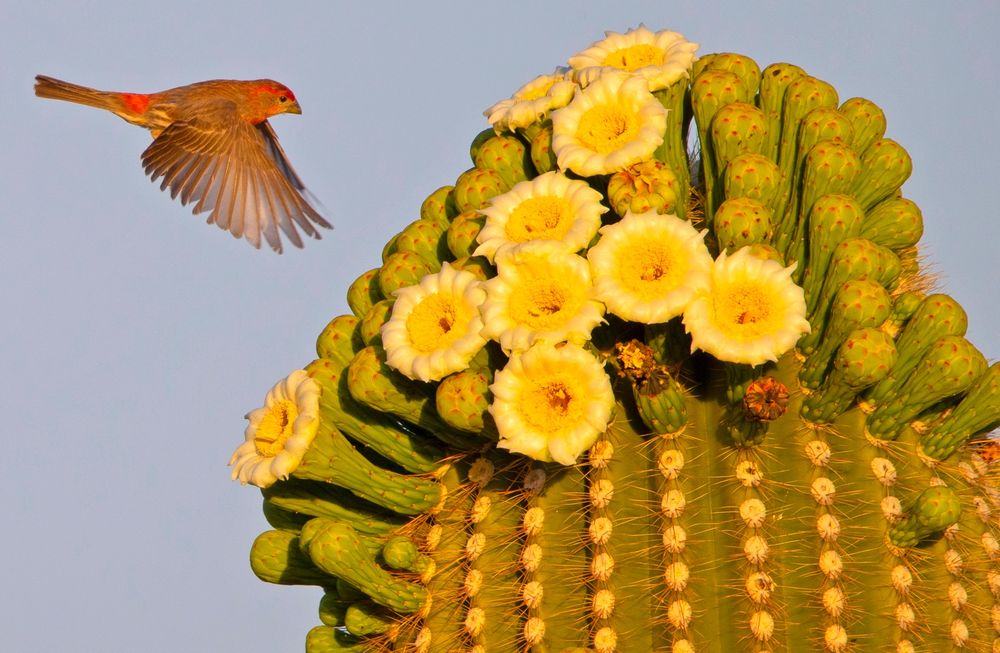
This is a photo of a brown and red bird to the left of a flowering cactus, it is set against a blue sky.
Are specializations evolutionary dead ends? Morrison et al. reveal that in bird carotenoid evolution, continuity and stability are two sides of the same coin.
Read now ahead of print!
www.journals.uchicago.edu/doi/10.1086/...
19.07.2025 01:26 — 👍 25 🔁 6 💬 0 📌 0
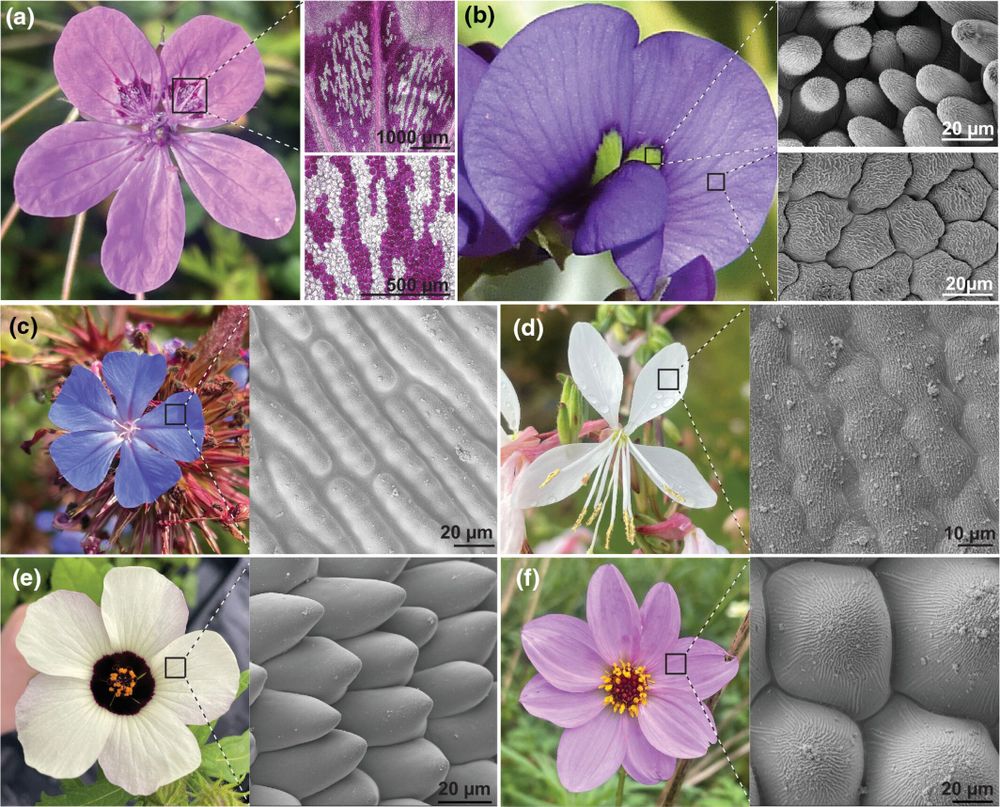
Fig.3 Micropatterns on the petal surface are created by variation in epidermal cell pigment, shape and cuticle textures.
✨ Paper spotlight ✨
(🧵 1/3) Evolution of petal patterning: blooming floral diversity at the microscale
nph.onlinelibrary.wiley.com/doi/10.1111/...
15.07.2025 09:03 — 👍 50 🔁 21 💬 1 📌 0
Are you a PI in a biology field looking for postdocs? Here is a Starter Pack of early career biologists currently seeking postdoctoral positions! (Also if you are searching for a postdoc, let me know if you want to be added!) go.bsky.app/8zZNEGV
16.07.2025 22:42 — 👍 110 🔁 87 💬 43 📌 4
Dieunomia heteropoda? I got curious and asked the BeeMachine app, then looked for similar Dieunomia images. We don’t have this genus in Japan, but what an amazing look for a halictid! (if I’m correct)
11.07.2025 01:01 — 👍 2 🔁 0 💬 1 📌 0
Career Opportunities: Postdoc or PhD student position in Plant Physiology (22260)
We have a unique opportunity for a junior researcher, PhD student or postdoc, to use a revolutionary technique for mineral nutrient imaging and tracing in plants. Please re-post! Interested candidates should apply through the portal at the link below:
career5.successfactors.eu/career?compa...
29.05.2025 23:47 — 👍 54 🔁 79 💬 1 📌 3
I believe you’re talking about tsukibito.
25.05.2025 09:03 — 👍 1 🔁 0 💬 1 📌 0
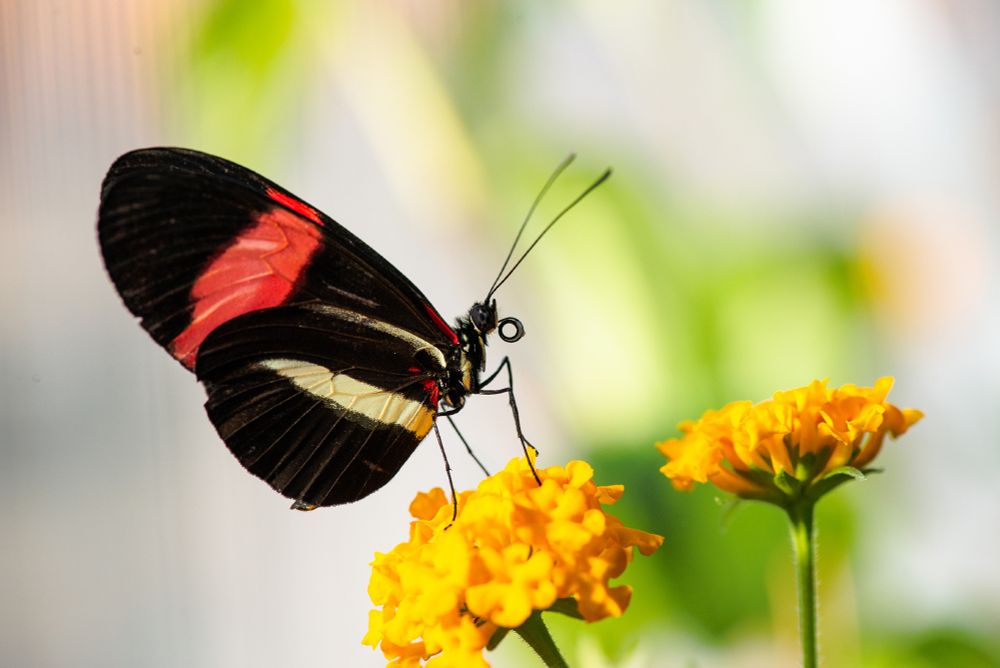
Interested in a PhD connecting sensory ecology and evolutionary genetics? Applications are now open for a project on the Speciation Genomics of Eye Size Variation in Heliconius Butterflies in our lab at LMU Munich: www.evol.bio.lmu.de/research/mer... Please repost!
06.05.2025 11:40 — 👍 100 🔁 100 💬 0 📌 4

A clear-wing hawkmoth (Cephonodes hylas) oviposits on a young shoot of Gardenia jasminoides, its larval host plant. The moth’s body is sharply lit against the glossy green foliage, emphasizing its fuzzy yellow thorax and striped abdomen.

In mid-air, a clear-wing hawkmoth (Cephonodes hylas) hovers with wings outstretched.
Glad to see the clear-wing hawkmoth (Cephonodes hylas) is back in our garden! The way they quickly and accurately find their food plants (Gardenia jasminoides) and lay eggs is simply mind-blowing. #Hawkmoths
06.05.2025 11:36 — 👍 6 🔁 0 💬 0 📌 1

A close-up photograph of a Rosa multiflora blossom being visited by a hoverfly, Episyrphus balteatus. The fly’s translucent wings and vivid orange-and-black striped abdomen contrast beautifully with the delicate white petals and bright yellow stamens of the flower.
A marmalade hoverfly on a multiflora-rose flower. I love photography as it constantly reminds me of the breathtaking beauty of the creatures that inhabit our world. #Hoverflies #NativeFliwers
06.05.2025 11:21 — 👍 4 🔁 0 💬 0 📌 0
In today's episode of the Night Science Podcast we talk with Martin Schwartz from Yale about the importance of stupidity in science: while learning science makes you feel smart, true scientific discovery often involves feeling stupid, because it means venturing into the unknown.
21.04.2025 11:31 — 👍 200 🔁 56 💬 3 📌 11

Masters or PHD student – nectar evolutionary ecology
Amy Parachnowitsch’s Floral Evolutionary Ecology Lab
University of New Brunswick
I am seeking a motivated student(s) to examine the role of anthropomorphic change in nectar evolutionary ecology. Potential projects include: 1) assessing how anthropogenic change affects nectar evolution, 2) quantifying phenotypic selection on nectar traits and assessing the ecological contexts where it is a target of selection, and 3) determining the ecological and genetic contributions to nectar variation to allow a predictive framework for evolutionary change. Project details will be determined with the student. Likely systems will be fireweed (Chamerion angustifolium) or white clover (Trifolium repens). More about the Biology program at UNB: https://www.unb.ca/fredericton/science/depts/biology/graduate/index.html
Requirements: 4-year undergraduate degree in Biology or similar / research Masters degree for PhD position. Undergraduate grade point average of 3.0 or higher. English language proficiency. Research experience an asset (e.g. honours thesis).
Deadline: recruitment will continue until filled, however applications before May 5, 2025 can apply for recruitment scholarships to top up salary. Sept 2025 or Jan 2026 start date
Salary: UNB Biology base stipend $13500 plus tuition and fees (includes teaching assistant position for 2 semesters/year).
Apply: send a cover letter of research interests, CV, and transcripts (can be unofficial) to aparachn@unb.ca (application to UNB will follow recruitment)
Note: Qualified international applicants are welcome to apply but may face additional requirements (e.g. proof of language proficiency, etc).
I'm seeking graduate students interested in studying nectar evolutionary ecology. Masters or PhD. Sep 2025 or Jan 2026 start. Interested students encouraged to apply by May 5 to be eligible for additional scholarships. #gradschool #flower #evolution #nectar #pollination
17.04.2025 10:01 — 👍 13 🔁 21 💬 0 📌 1

A huge ground blue gentian with more than ten flowers.
A huge Gentiana zollingeri 😍 #NativePlants #Spring
15.04.2025 20:51 — 👍 9 🔁 0 💬 0 📌 0
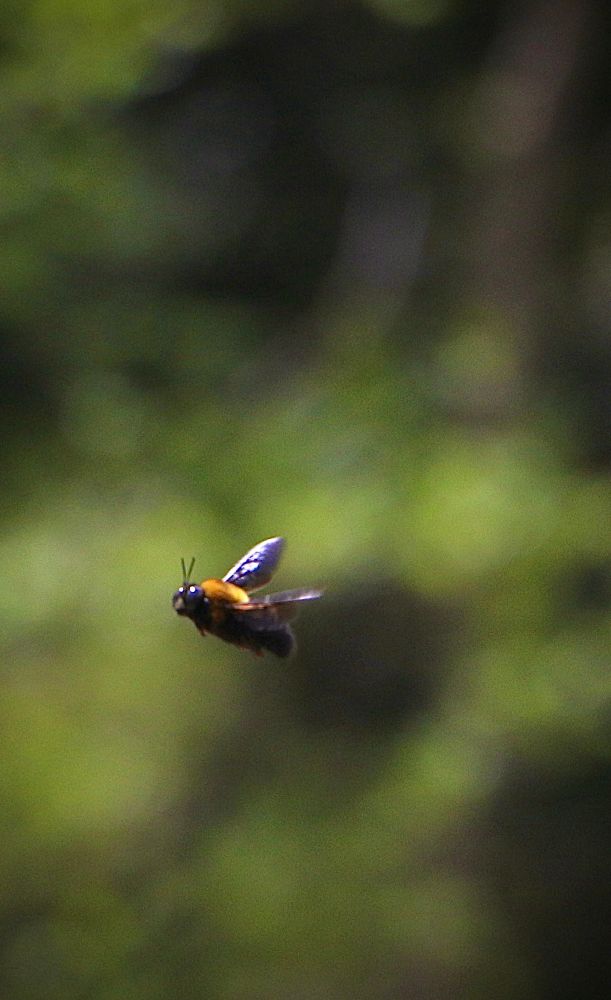
A male carpenter bee hovers mid-air with its wings outstretched. Its body is robust, with a golden-brown thorax and a shiny, dark abdomen.
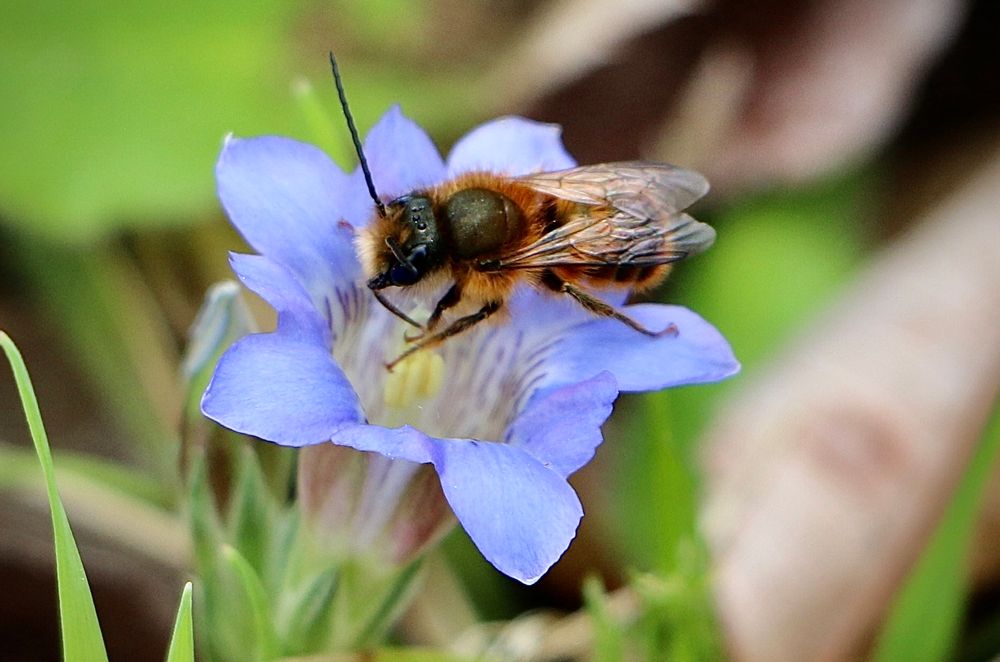
A male mason bee is perched on the edge of a blue gentian flower. The bee has a reddish-brown, fuzzy thorax and a dark metallic greenish head. Its wings are translucent and neatly folded over its back.

A male Eucera bee with very long antennae visits a cluster of blue gentian flowers. The bee is facing downward into one of the blossoms, its wings reflecting light.

A female Andrena bee resting on a leaf with large yellow pollen cakes on its hind legs. Her body is also covered with pollen grains.
Took a short walk around campus. Delighted to see a carpenter bee, a mason bee, a long-horned bee, and a mining bee! #Bees
15.04.2025 20:46 — 👍 9 🔁 0 💬 0 📌 0
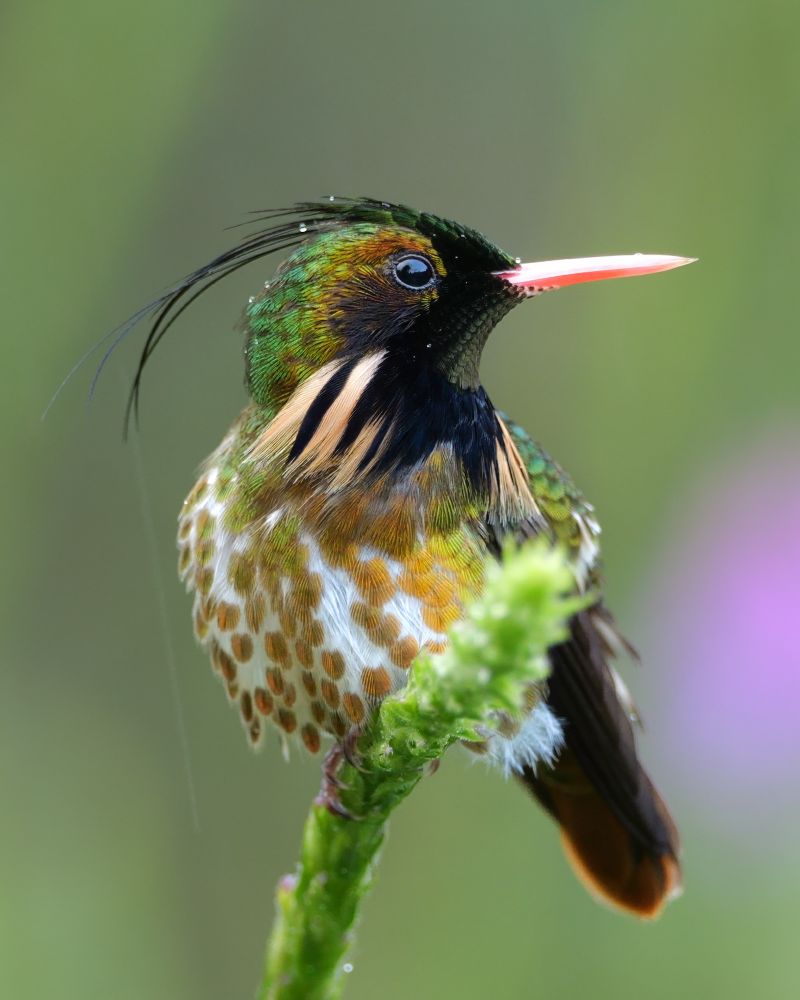
Close-up of a tiny bird perched on a green stem. It has an iridescent green head with fine whisker-like feathers, a striking pink-red bill, and a distinctive spotted pattern on its white chest. The bird's neck features black stripes with cream accents, and its body shows metallic green and gold hues. The background is softly blurred in muted green tones, highlighting the bird's intricate details and colorful plumage.
Another understated bird, the male Black-crested Coquette hummingbird at @tapirvalley.bsky.social #CostaRica
#birds #nature #hummingbirds 🌿
13.04.2025 21:50 — 👍 9585 🔁 914 💬 177 📌 59

Here is the very first publication of the SCAPE joint special issue of JPE with @nordicjbotany.bsky.social (scheduled late 2025/early 2026) - an extremely well-thought editorial by James Thomson on how we should think about the pollination crisis: doi.org/10.26786/192...
09.04.2025 08:45 — 👍 6 🔁 3 💬 0 📌 1
Urban Forestry Prof @ulaval.ca | Applied & transdisciplinary research on #UrbanForests 🌳 & #Soils | #ResilientCities #Climate | Studying human impacts | Bridging science, policy & practice | #SciComm | 📸, #HikingTrails & travel 🇨🇦 www.jananisivarajah.com
Associate Professor at LSU trying to understand how hormones & neurotransmitters help wild animals successfully cope with environmental challenges. She/her
"RestPoll: Restoring pollinator habitats across European agricultural landscapes based on multi-actor participatory approaches” is an EU-funded project
|Conneticut Agriculture Expirement Station|
Bee ecology, behavioral ecology, and foraging behavior.
Interested in how landscapes shape and mold bee communities.
Ecologist and associate professor at Cal State Los Angeles. Parent and Partner. Lab themes: avian & applied ecology, urban ecosystems, urbanism, bird migration, natural history & conservation
www.ericmwood.org
The place where your nature photos impact science & conservation around the world. Free, nonprofit, & community-powered. 🪲🐌🌿
ornithology, wildlife, photography and ecology!
#highlandbirds #ornithology #teammoth #birdingScotland #seabirds
Highlands of Scotland 🏴
🪶 🦅 🦆 🦋 ⛰️ 🌊 🐋 🦈 🐙 🏝️ 🌳 🌲
To forecast and encourage the recording of insect migration events in the UK & Ireland. Please send your records to your County Recorder. Admin @stevenash71.bsky.social
The official account for UK wildlife charity Butterfly Conservation. Saving butterflies, moths and our environment. 🦋
https://butterfly-conservation.org/
Cover photo 📷: Small Copper - Paul Henson
Ecology researcher
Interested in pollinator ecology and wild bee taxonomy
Myrmecologist | Accidental bioacoustician | Behavioural ecologist | PhD student @ Umeå university |
Don't let pfp fool you I'm a parrot fan too :]
Ant drawing by Hélène Bézin--Chaingy
Used to study at Sorbonne Nord @leec-uspn.bsky.social
Double Degree International Master Program between 🇩🇪 Würzburg & 🇳🇴 Bergen in 🌱Ecology, 🌿Conservation & 🌡️Global Change
https://www.ecology-conservation.de/
Assistant Professor, Environmental Studies, NYU
Primatologist, Author of THE ARROGANT APE
https://www.cewebb.com
All the #science #news you can handle in a single feed without commentary or spam. Pure, unadulterated science.
See more articles @ https://purescience.news
Entomologist with the National Biodiversity Data Centre 🐝🐞🦋
Ireland
Conservation Scientist @VTecostudies studying ecology of plants, insects, and birds. Crazy Cat(erpillar) Lady #urbanecology #forestecology #speciesinteractions #conservation #globalchange
what I'm up to --> http://www.desireelnarango.com
Hobby beekeeper & sumo fan in Metroland. Naturalised Brit, ex-American, semi-visible bisexual, extremely woke Christian. Post too much about Fukuyama Masaharu, Leonard Cohen, hoverflies & kanji. Ride or die for trans people, refugees & bats. 私は日本語を勉強しています。
native plant gardening, southern piedmont/8a. Community habitat gardener +space+experimental music. pics are from my personal & community gardens. Stargazer/Shoegazer. Anti-fash. Speak friend and enter. Dissent=patriotism
Molecular Biologist/Ecologist (🧬🐝🌼) in 🇧🇪
PhD in Forest Sciences (🧬🌲🍄) from @universitelaval.bsky.social 🇨🇦
Plantologist 🌿 - Biased torwards 🏴








